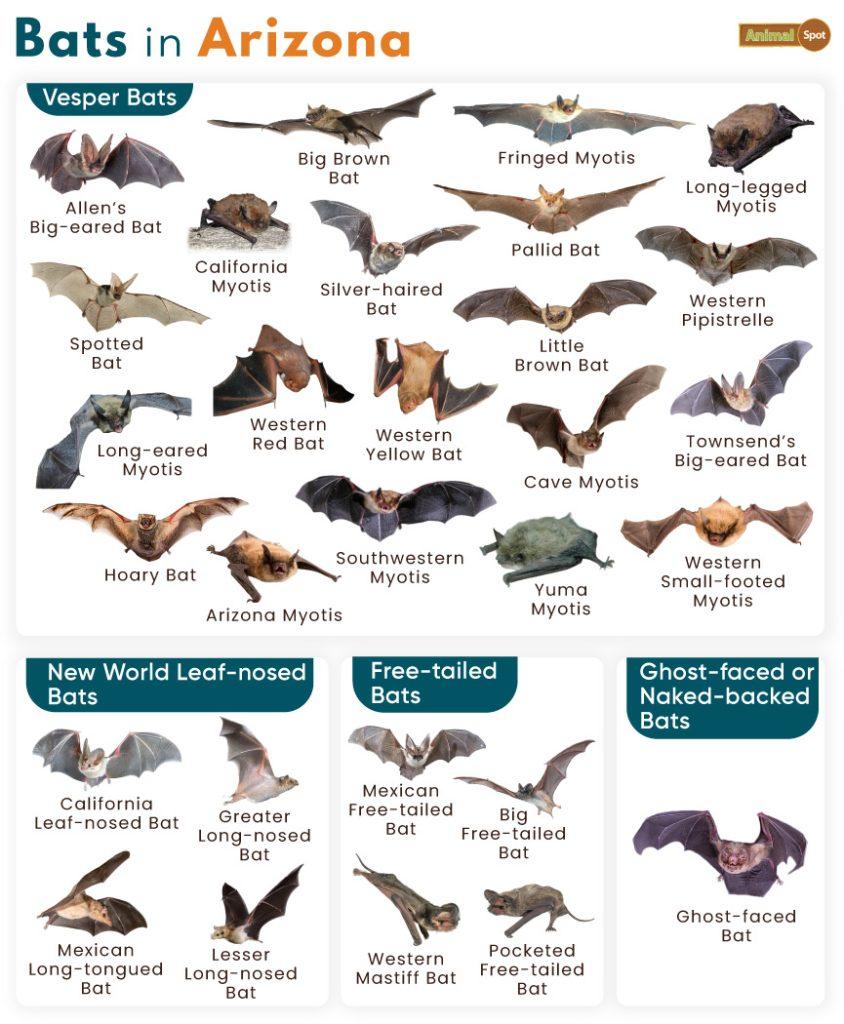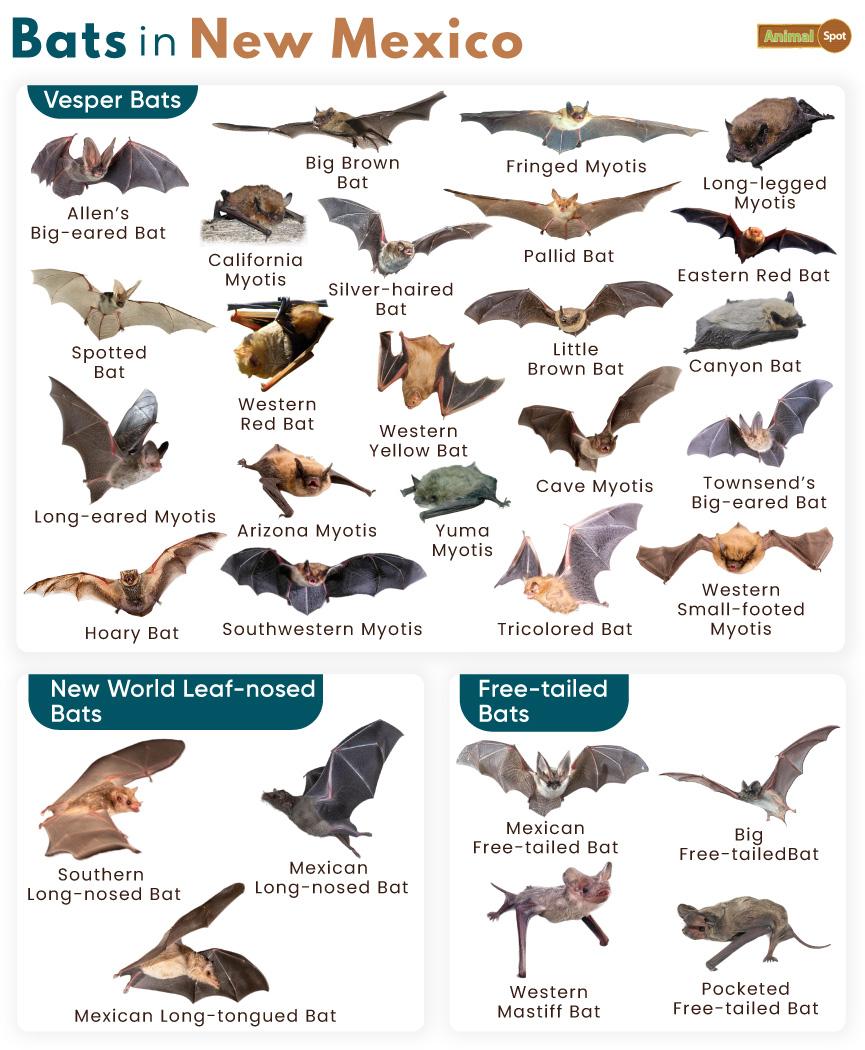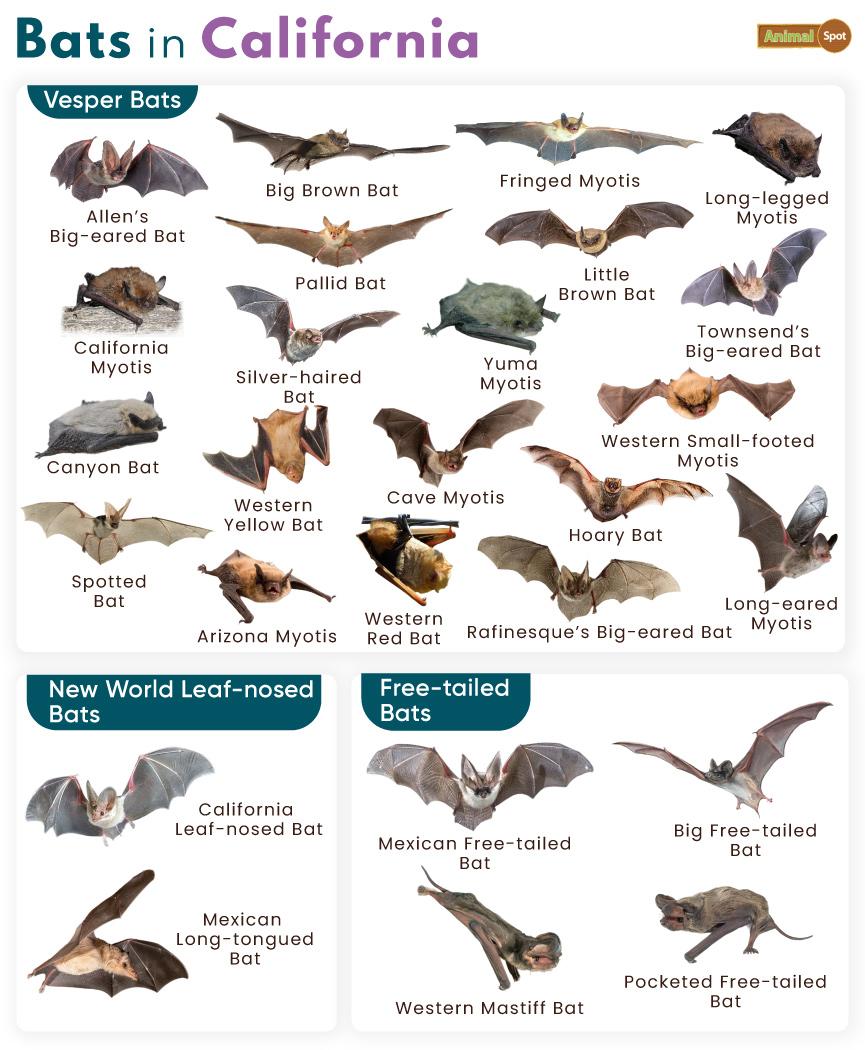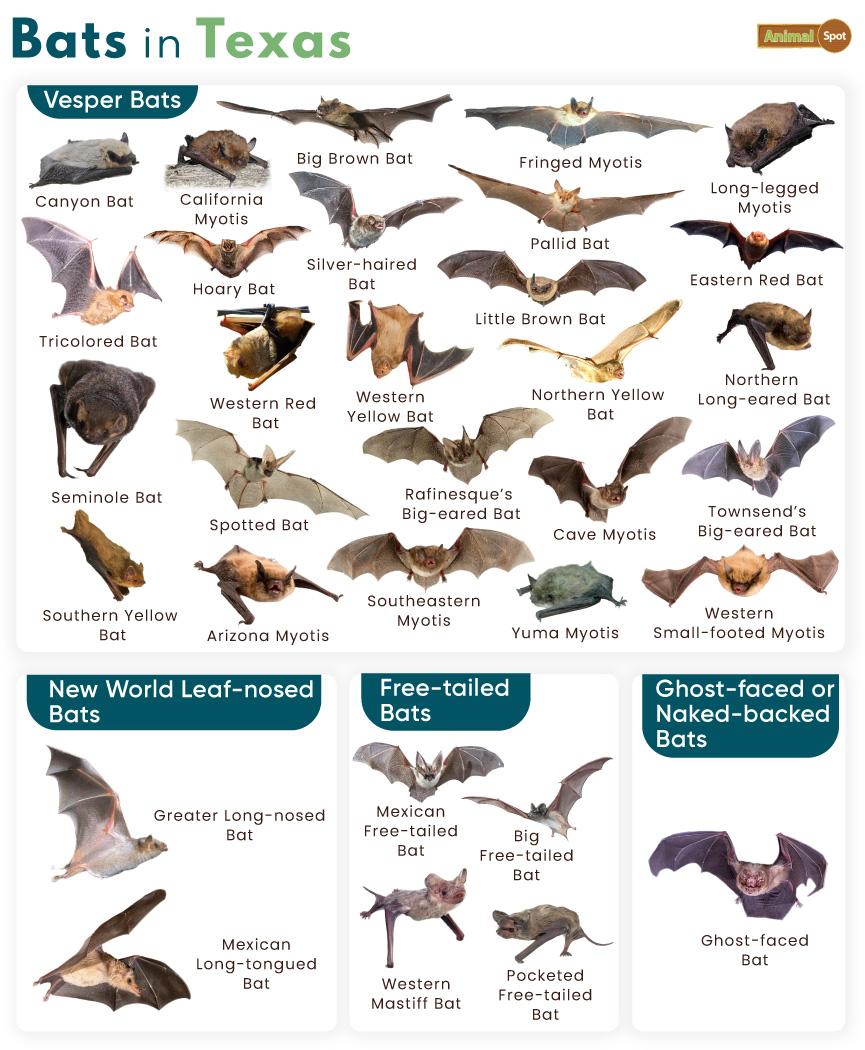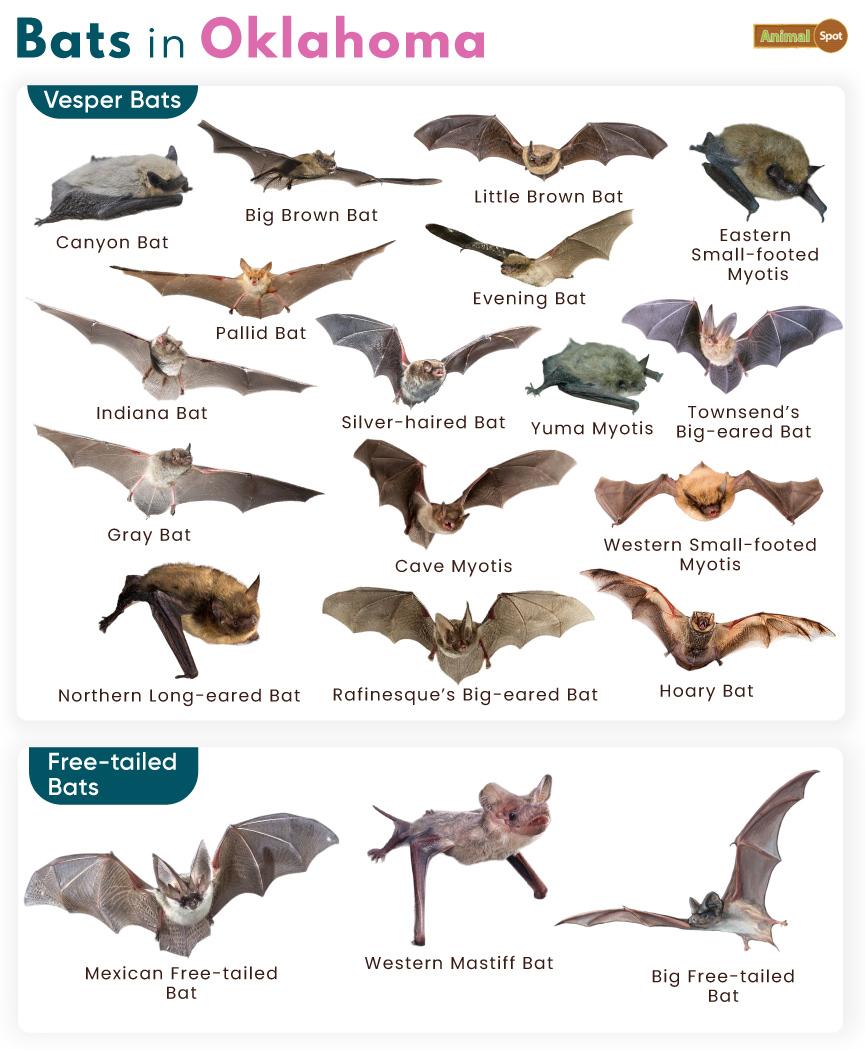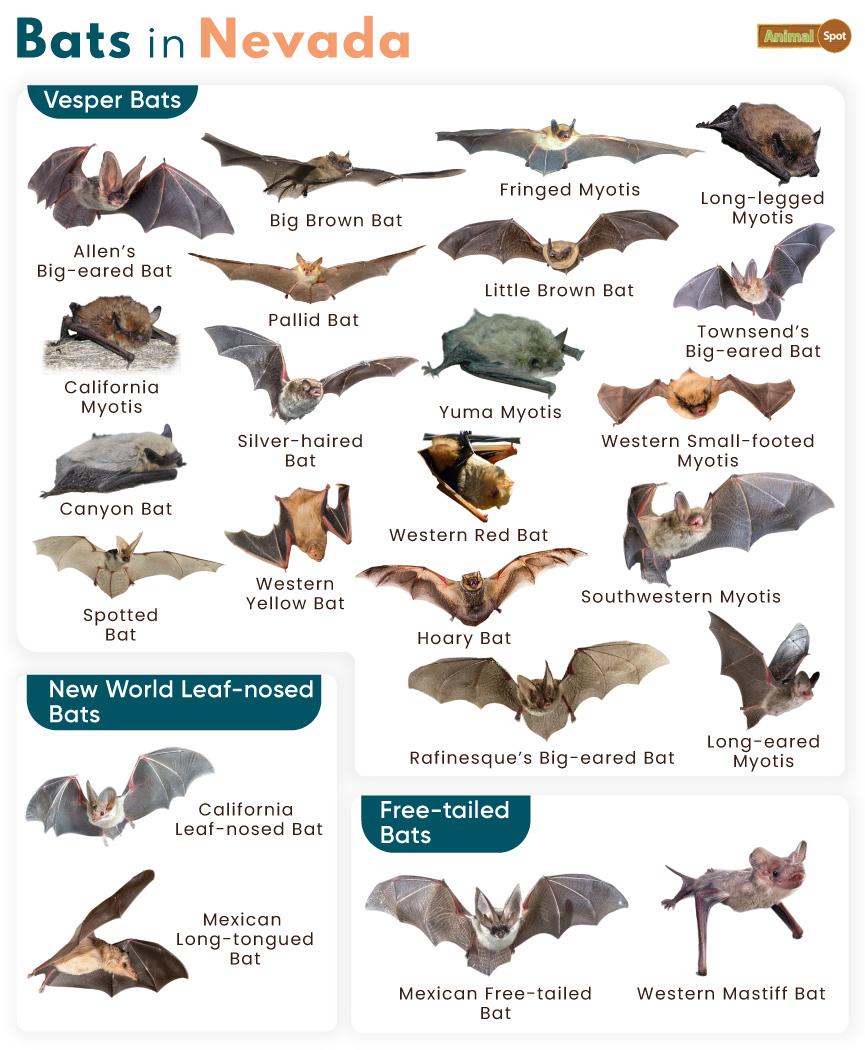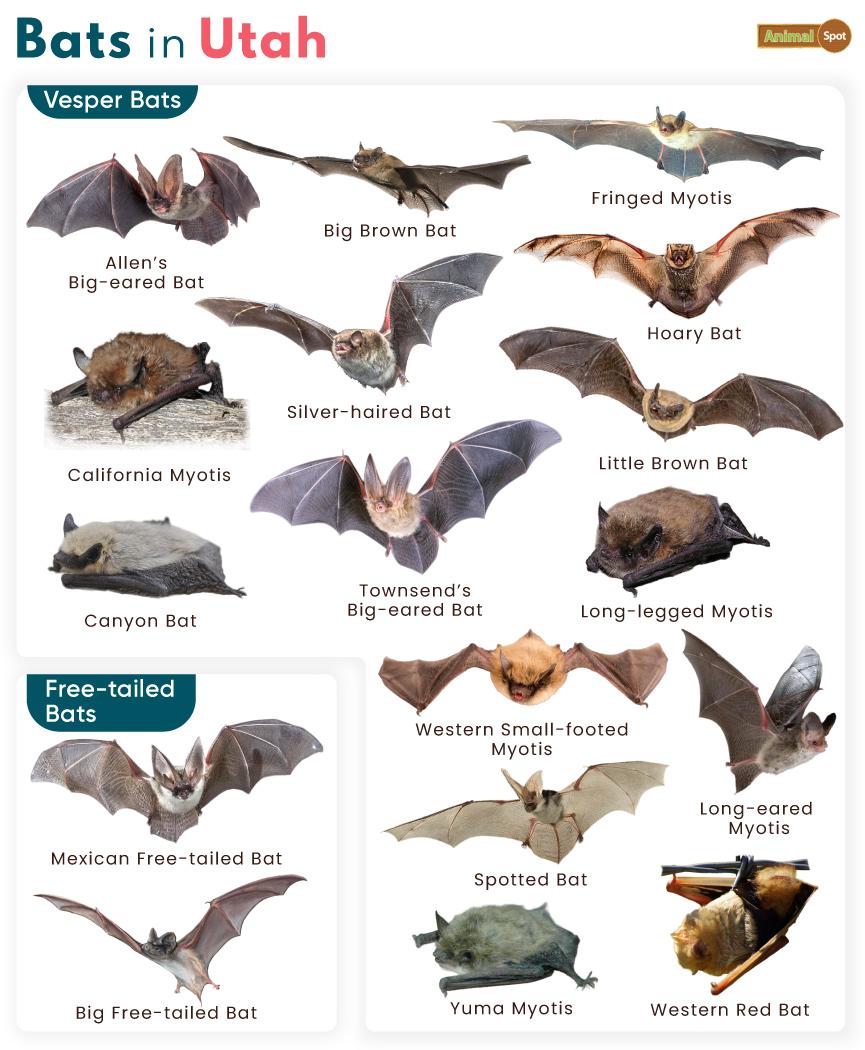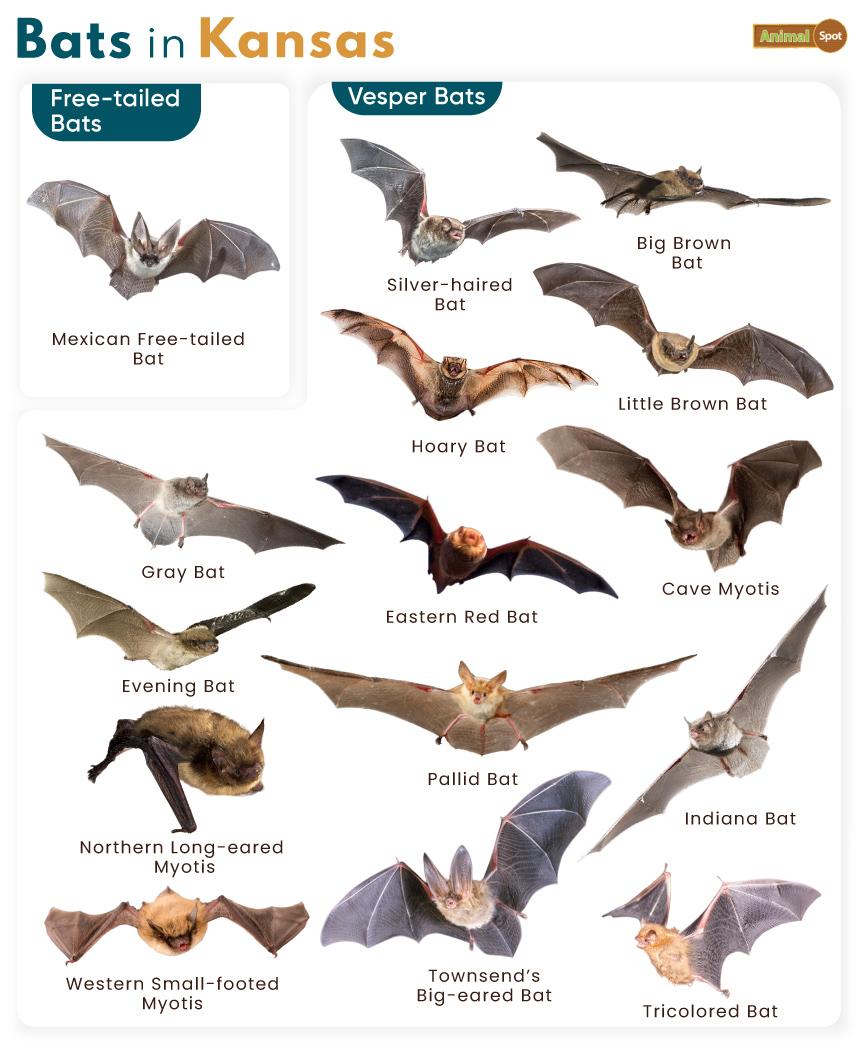Arizona is home to almost 30 species of bats, which is hardly surprising, given it is the 3rd most biodiverse state in the US. The little brown bat, western pipistrelle, and Mexican free-tailed are among the most common species in the state. The western pipistrelle holds the title for being the smallest bat in Arizona (and the whole of the United States), while the western mastiff, Townsend’s big-eared, and big brown bats are some of the largest.
Many of these flying mammals face severe threats to their existence and are protected by law in Arizona. These include the western mastiff, California leaf-nosed, lesser long-nosed, and spotted bats.
Different Types of Bats in Arizona
Free-tailed Bats (Molossidae)
- Mexican Free-tailed Bat
- Pocketed Free-tailed Bat
- Western Mastiff Bat
- Big Free-tailed Bat
New World Leaf-nosed Bats (Phyllostomidae)
- California Leaf-nosed Bat
- Mexican Long-tongued Bat
- Lesser Long-nosed Bat
- Greater Long-nosed Bat
Vesper Bats (Vespertilionidae)
- Hoary Bat
- Pallid Bat
- Big Brown Bat
- Little Brown Bat
- Townsend’s Big-eared Bat
- Spotted Bat
- Silver-haired Bat
- Allen’s Big-eared Bat
- Western Yellow Bat
- Western Red Bat
- Western Small-footed Myotis
- Southwestern Myotis
- California Myotis
- Long-eared Myotis
- Yuma Myotis
- Arizona Myotis
- Cave Myotis
- Long-legged Myotis
- Fringed Myotis
- Western Pipistrelle
Ghost-faced Bats or Naked-backed Bats (Mormoopidae)
Places To Go Bat Watching in Arizona
The Phoenix Bat Cave is a significant attraction for animal enthusiasts in Arizona. Thousands of Mexican free-tailed bats gather in these caves and fill the skies as they emerge in search of food at night. Though they stay in these caves from March to October, the best time to visit is June through August because the biggest groups gather during this period.
Tuscon has some good spots for watching Mexican Free-tailed Bats that spend their daytime in the town’s bridges, coming out in the evening. The Campbell Avenue bridge over Rillito River and the East Broadway overpass across Pantano Wash are two noteworthy bat-watching points.
FAQ
1. Do bats hibernate in Arizona?It may vary based on the habitat range and cold-withstanding ability of different species. For example, big-eared and brown bats are known to hibernate during the winter. On the other hand, others, like the California leaf-nosed and ghost-faced bats, do not hibernate, nor do they migrate.
2. Are there any nectar-eating bats in Arizona? The Mexican long-tongued and lesser long-nosed bats are two nectar-eating species in Arizona that may often visit hummingbird feeders after sunset.
3. Are there any fruit bats or vampire bats in Arizona?There are no fruit bats (family: Pteropodidae) or vampire bats (subfamily: Desmodontinae) in the state.

